REBLOG IF A VIDEO GAME ENDING HAS EVER MADE YOU CRY
REBLOG IF A VIDEO GAME ENDING HAS EVER MADE YOU CRY
More Posts from Inter-stellxr-blog and Others




NASA just released thousands of high-res Apollo mission photos
The space research agency’s Project Apollo Archive made a massive update to its Flickr account Sunday, adding a trove of more than 8,000 photos taken during Moon missions from 1969 to 1972.

Cygnus entering the atmosphere, photographed by Alexander Gerst on the ISS.

The forward bulkhead and tunnel for Exploration Mission 1 undergoing paint priming, October 9, 2015. The EM-1 Orion capsule is being fabricated at the Michoud Assembly Facility in New Orleans, Louisiana. Seven major components are welded together to create the capsule’s pressure vessel. It then gets shipped to Kennedy Space Center in Florida where it undergoes final assembly and outfitting of key systems.

Water on Mars!

Did you hear? New findings from our Mars Reconnaissance Orbiter (MRO) provide the strongest evidence yet that liquid water flows intermittently on present-day Mars.
Using an imaging spectrometer on MRO, we found hydrated minerals on slopes where mysterious streaks are seen on Mars. One thing that researchers noticed was that the darkish streaks appear to ebb and flow over time. During warm seasons, they darken and then fade in cooler seasons.

When discovered in 2010, these downhill flows known as recurring slope lineae (RSL) were thought to be related to liquid water. With the recent spectral detection of molecular water, we’re able to say it’s likely a shallow subsurface flow explains the darkening.
Mars is so cold, how could liquid water flow there? Great question! Since this liquid water is briny, the freezing point would be lower than that of pure water. Also, these saline slopes appear on Mars when temperatures are above minus 10 degrees Fahrenheit (minus 23 Celsius).
The dark, narrow streaks flowing downhill in the below image are roughly the length of a football field.

So there’s water, but how much? Currently we think this area has a very small amount of water, probably just enough to wet the top layer of the surface of Mars. The streaks are around four to five meters wide and 200 to 300 meters long.
Could humans drink this water? The salts in the water appear to be perchlorates, so you probably wouldn’t want to drink the water. It would most likely be very salty and would need to be purified before human consumption.
Perchlorate…What is that? A perchlorate is a salt that absorbs water from the air. Learn more about how it’s helping us unlock the mysteries of Mars in this video:
What’s next? We want to look for more locations where brine flows may occur. We have only covered 3% of Mars at resolutions high enough to see these features.
For more information on the Mars announcement, visit our Journey to Mars landing page. There is also a full recap of the press conference HERE, and a short recap below.
Make sure to follow us on Tumblr for your regular dose of space: http://nasa.tumblr.com


Wernher von Braun’s space station concept in Collier’s, March 22, 1952 - (source)

ISS Symphony

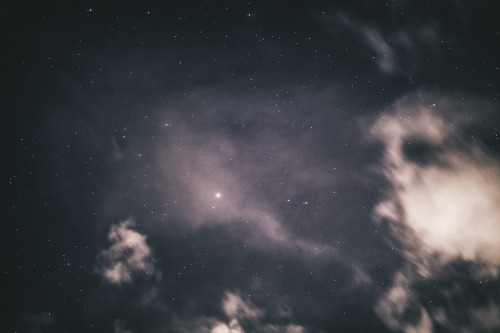



How to blow your cat’s mind: brush their teeth.

Astronomers have found compelling signs for a supermassive black hole in the center of almost every large galaxy they have scrutinized, and the Milky Way is no exception. The core of our galaxy harbors an object called Sagittarius A* (pronounced A-star) — a black hole with about 4 million times the Sun’s mass. It’s the 19th confirmed black hole in the Milky Way, and it sits dead in the center.
The evidence takes several forms. First, intense radio waves and X-rays flow from an accretion disk that spans a region no bigger than our solar system. But the proof comes from careful tracking of the motions of stars as they orbit the central mass. It’s the same method astronomers use to hunt for globular cluster black holes, but the huge size of the object in the Milky Way’s heart makes these motions far easier to see. Analyzing the stellar orbits leads directly to the black hole’s mass.
The count of black holes in our galaxy likely will continue to grow in the years ahead, but it never will outpace the flood of planet discoveries. The ability to find planets has reached the stage where it’s surprising when a week goes by without a new detection. Black holes hide their identities much better, either behind the cloak of an event horizon or in isolation from other objects. Perhaps the biggest surprise in the study of our galaxy’s black holes is that we’ve already found 19.
[Continue Reading→]
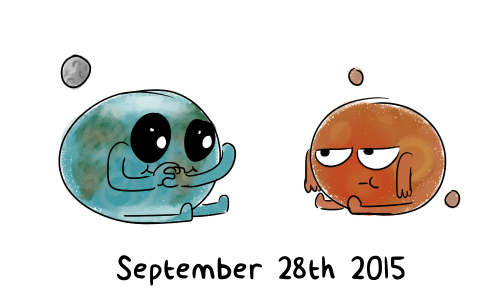
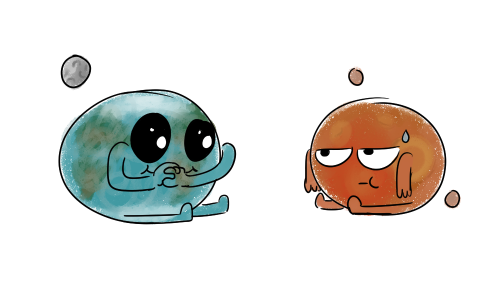
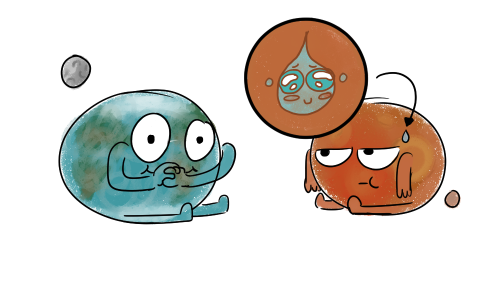


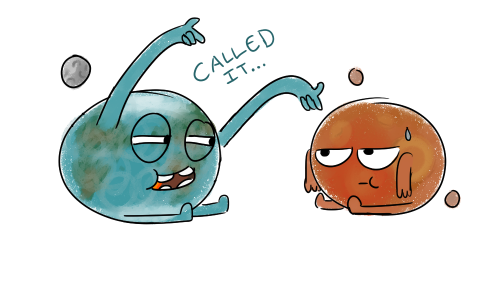
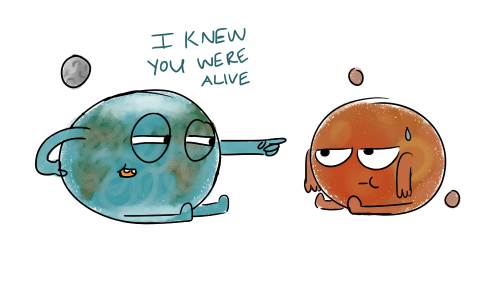

-
 mindlesskuru liked this · 1 month ago
mindlesskuru liked this · 1 month ago -
 queenofperv reblogged this · 1 month ago
queenofperv reblogged this · 1 month ago -
 watermelonrandom liked this · 2 months ago
watermelonrandom liked this · 2 months ago -
 warsawmouse liked this · 3 months ago
warsawmouse liked this · 3 months ago -
 purpule-gay reblogged this · 3 months ago
purpule-gay reblogged this · 3 months ago -
 aimless-passerby reblogged this · 3 months ago
aimless-passerby reblogged this · 3 months ago -
 fablenaught reblogged this · 6 months ago
fablenaught reblogged this · 6 months ago -
 gameworksasset708 reblogged this · 6 months ago
gameworksasset708 reblogged this · 6 months ago -
 abrightphonehandset liked this · 8 months ago
abrightphonehandset liked this · 8 months ago -
 ace-disaster-weeb reblogged this · 10 months ago
ace-disaster-weeb reblogged this · 10 months ago -
 ace-disaster-weeb liked this · 10 months ago
ace-disaster-weeb liked this · 10 months ago -
 shippin-my-sanses liked this · 10 months ago
shippin-my-sanses liked this · 10 months ago -
 spamgriffinsect reblogged this · 10 months ago
spamgriffinsect reblogged this · 10 months ago -
 onelittleninja reblogged this · 11 months ago
onelittleninja reblogged this · 11 months ago -
 onelittleninja liked this · 11 months ago
onelittleninja liked this · 11 months ago -
 daifukubun reblogged this · 11 months ago
daifukubun reblogged this · 11 months ago -
 daifukubun liked this · 11 months ago
daifukubun liked this · 11 months ago -
 mydogtypedthis reblogged this · 11 months ago
mydogtypedthis reblogged this · 11 months ago -
 ayakashibackstreet reblogged this · 11 months ago
ayakashibackstreet reblogged this · 11 months ago -
 ayakashibackstreet liked this · 11 months ago
ayakashibackstreet liked this · 11 months ago -
 feathers-little-nest reblogged this · 11 months ago
feathers-little-nest reblogged this · 11 months ago -
 feathers-little-nest liked this · 11 months ago
feathers-little-nest liked this · 11 months ago -
 blair-the-bold reblogged this · 11 months ago
blair-the-bold reblogged this · 11 months ago -
 blair-the-bold liked this · 11 months ago
blair-the-bold liked this · 11 months ago -
 half-life-enjoyer reblogged this · 11 months ago
half-life-enjoyer reblogged this · 11 months ago -
 count-thotticus reblogged this · 11 months ago
count-thotticus reblogged this · 11 months ago -
 another-awkward-user liked this · 11 months ago
another-awkward-user liked this · 11 months ago -
 another-awkward-user reblogged this · 11 months ago
another-awkward-user reblogged this · 11 months ago -
 nateisanerd reblogged this · 11 months ago
nateisanerd reblogged this · 11 months ago -
 nateisanerd liked this · 11 months ago
nateisanerd liked this · 11 months ago -
 uvilight reblogged this · 11 months ago
uvilight reblogged this · 11 months ago -
 sunn-kist reblogged this · 11 months ago
sunn-kist reblogged this · 11 months ago -
 sunn-kist liked this · 11 months ago
sunn-kist liked this · 11 months ago -
 avenuequed reblogged this · 11 months ago
avenuequed reblogged this · 11 months ago -
 overcaffeinateddoctor liked this · 11 months ago
overcaffeinateddoctor liked this · 11 months ago -
 dawn-delocksley reblogged this · 11 months ago
dawn-delocksley reblogged this · 11 months ago -
 dawn-delocksley liked this · 11 months ago
dawn-delocksley liked this · 11 months ago -
 glitter-garbage reblogged this · 11 months ago
glitter-garbage reblogged this · 11 months ago -
 mythopoeticlicense reblogged this · 11 months ago
mythopoeticlicense reblogged this · 11 months ago -
 mythopoeticlicense liked this · 11 months ago
mythopoeticlicense liked this · 11 months ago -
 lizard-fashion reblogged this · 11 months ago
lizard-fashion reblogged this · 11 months ago -
 lizard-fashion liked this · 11 months ago
lizard-fashion liked this · 11 months ago -
 callthefruitsquad reblogged this · 11 months ago
callthefruitsquad reblogged this · 11 months ago -
 salt-gremlin reblogged this · 11 months ago
salt-gremlin reblogged this · 11 months ago -
 salt-gremlin liked this · 11 months ago
salt-gremlin liked this · 11 months ago -
 copper-dragon-in-disguise reblogged this · 11 months ago
copper-dragon-in-disguise reblogged this · 11 months ago
"I don't know who will read this. I guess someone will find it eventually. Maybe in a hundred years or so." -Mark Watney
174 posts